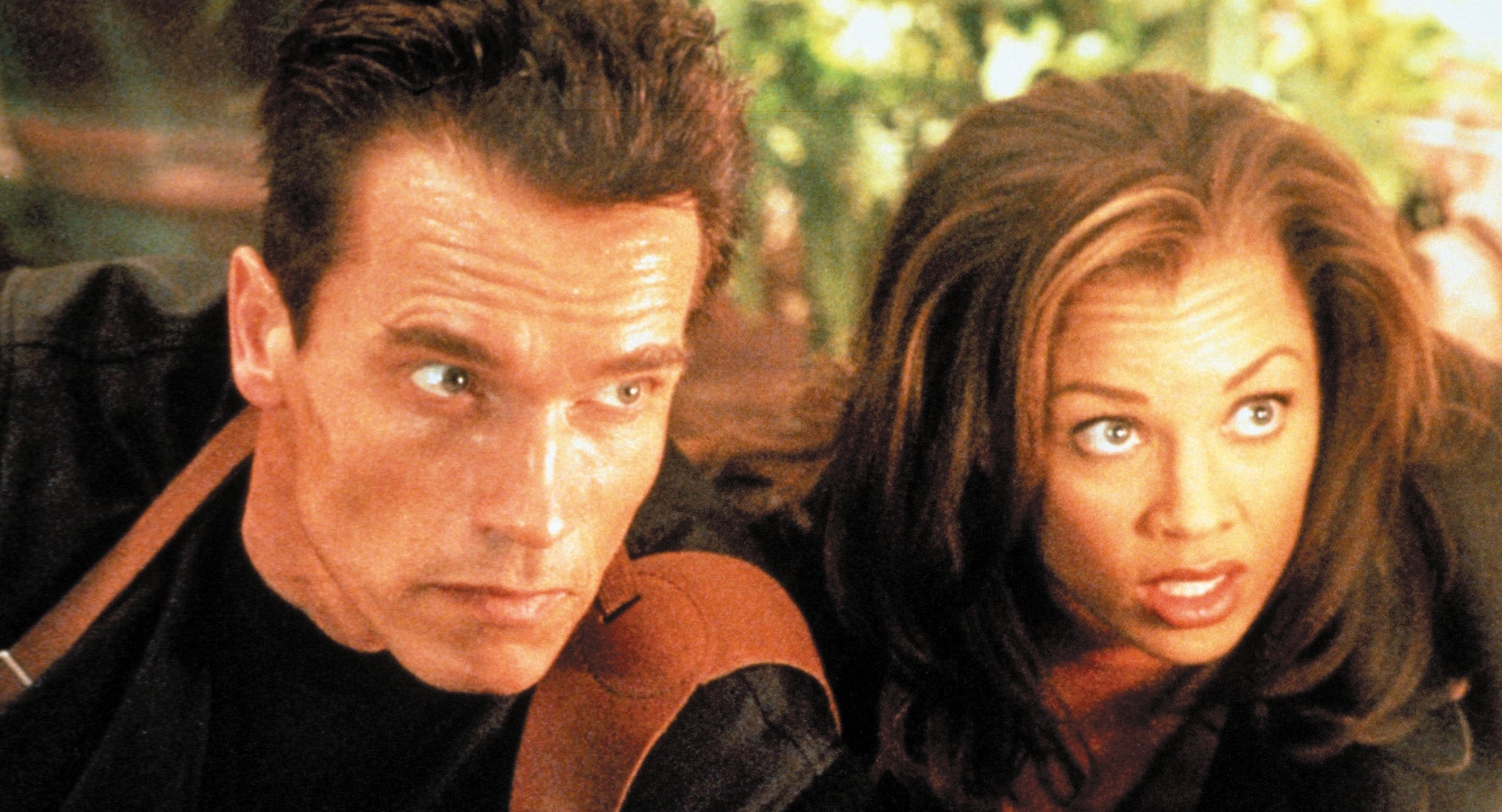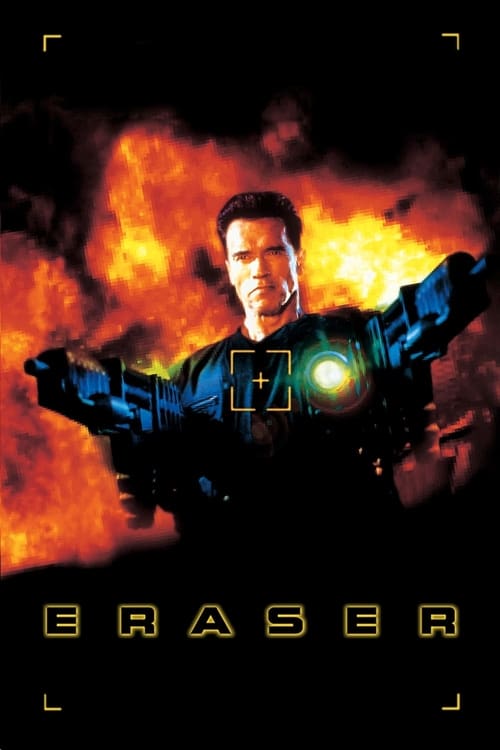Eraser – Film Review
Published March 10, 2024

In the mid-90s, a time brimming with high-octane action movies that defined the era, Eraser, directed by Charles Russell, sought to etch its mark amidst titans like Die Hard, Speed, and The Rock. Released in 1996, the film stars Arnold Schwarzenegger in the lead role, embodying the archetype of the indestructible action hero with a flair unique to his filmography. Yet, for all its explosions, high-stakes chases, and trademark Arnie one-liners, Eraser struggles to carve out a definitive identity, hovering between the spectacular and the middling.
The premise of Eraser is engaging enough for a 90s action flick; Schwarzenegger plays John Kruger, a U.S. Marshal who specializes in erasing the identities of witnesses under the Witness Protection Program, providing them with new lives away from the threats they face. The plot thickens when Kruger is assigned to protect Lee Cullen (Vanessa Williams), a whistleblower from a major defense contractor company, Cyrez Corporation, intent on exposing the company’s sale of cutting-edge weapons to international terrorists. What ensues is a tangled web of betrayal, high-tech weaponry, and relentless action sequences that push the boundaries of 90s special effects.
The film’s strongest asset is, undoubtedly, Schwarzenegger himself. By 1996, Arnie had solidified his status as a cultural icon, embodying the quintessential action hero who could deliver both bone-crunching blows and cheeky one-liners with equal aplomb. His portrayal of Kruger is competent, if not particularly nuanced, which aligns well with the film’s prioritization of spectacle over character depth. His chemistry with Vanessa Williams is palpable, lending the film a layer of emotional engagement that it sorely needs amidst the endless gunfire and explosions.
Eraser also distinguishes itself with a few memorable action sequences that stand out even in the crowded 90s landscape. The film makes creative use of its $100 million budget, particularly in a scene involving an aerial chase with parachutes, which remains thrilling to this day. Furthermore, the use of CGI, especially in rendering the film’s signature weapon, the EM-1 railgun, was revolutionary for its time, showcasing the potential for computer-generated imagery in action cinema beyond mere spectacle.
However, it is in its execution that Eraser falters, revealing the film’s critical shortcomings. While the action is competently staged, it often feels derivative, lacking the inventiveness or the raw intensity that set the era’s best action movies apart. The plot, while initially intriguing, quickly becomes convoluted, struggling under the weight of its own twists and betrayals. This narrative complexity does little to enhance the story, serving instead to muddle the stakes and distract from the characters’ emotional journeys.
Moreover, the supporting cast, while talented, is underutilized, relegated to stock characters without much room for development. James Caan‘s turn as the duplicitous U.S. Marshal Robert Deguerin could have offered a compelling foil to Schwarzenegger’s Kruger but is instead confined to predictable villainy. Similarly, James Coburn, as the chief of the Witness Protection Program, is given scant material to work with, a lamentable waste of his screen presence.
Perhaps the film’s most glaring issue is its tone. Eraser oscillates uneasily between taking itself too seriously and indulging in the campiness typical of Schwarzenegger’s oeuvre. This tonal inconsistency undermines the film’s attempt at crafting a coherent narrative, making it challenging for the audience to fully invest in the stakes or the characters. While the film occasionally leans into its absurdity — to its benefit — these moments feel disjointed rather than integral to the narrative.
Visually, Eraser embodies the aesthetics of 90s action cinema, for better or worse. While some of the CGI has aged poorly, most of the practical effects and stunt work hold up remarkably well. Cinematographer Adam Greenberg succeeds in capturing the frenetic energy of the action sequences, though the film’s visual style occasionally veers into generic territory.
Eraser feels like a relic of its time, embodying both the strengths and weaknesses of 90s action cinema. Its ambitious action set pieces and Schwarzenegger’s undeniable charisma are highlights, yet these cannot fully compensate for the film’s narrative shortcomings and lack of originality.
